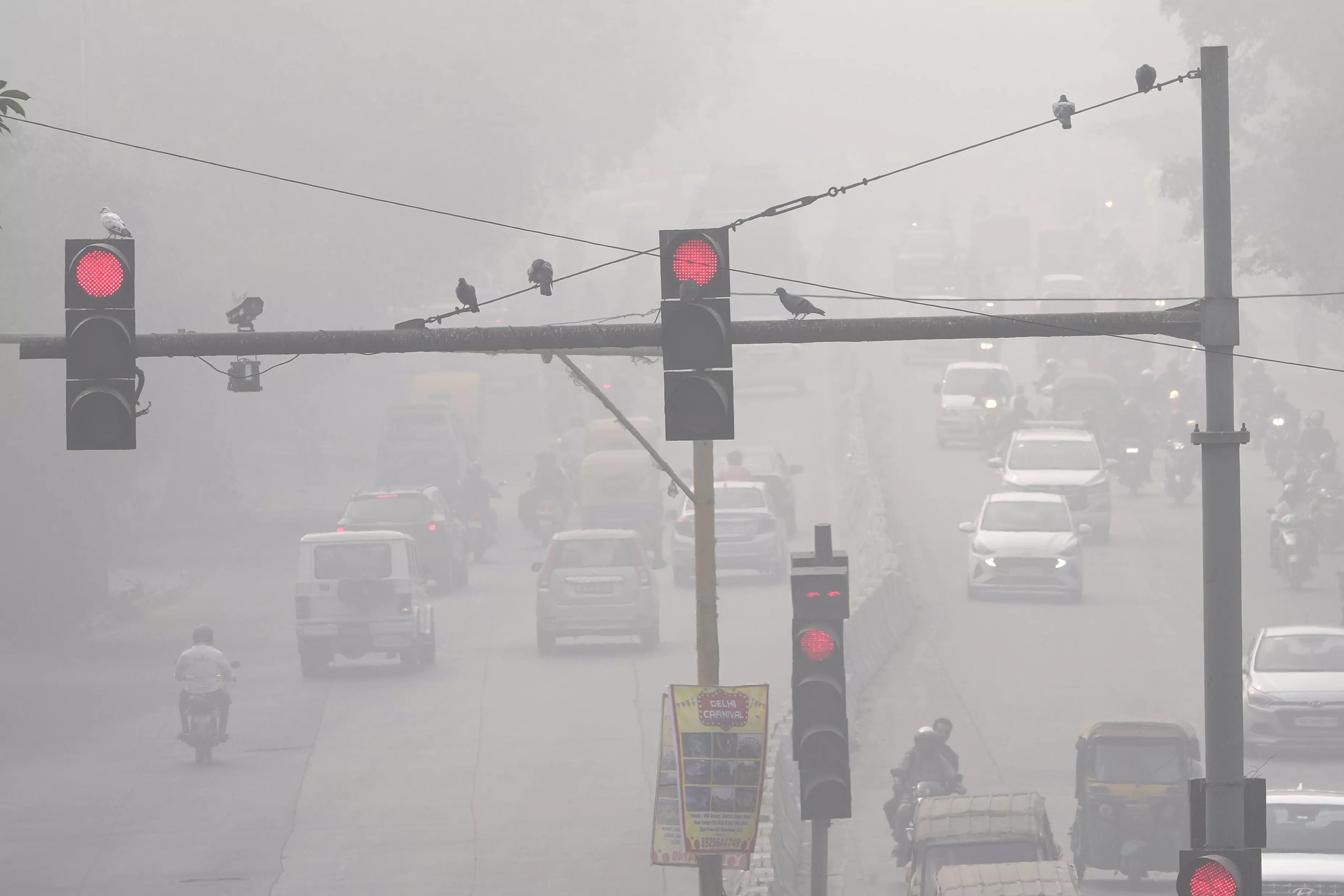Delhi air pollution: Flights, trains delayed due to fog

New Delhi: With air pollution reaching alarming levels, the Central pollution watchdog has announced the enforcement of stringent curbs under Stage 3 of the Graded Response Action Plan in Delhi-NCR from 8 am on Friday, November 15.
Flights and train services, meanwhile, were also disrupted on Thursday as a thick blanket of fog covered parts of Delhi for the second consecutive day, with the air quality index still remaining in the “severe” category.
Under GRAP-3, all inter-state buses from the NCR states — except electric vehicles, CNG vehicles and BS-VI diesel buses — will be prohibited from entering Delhi, alongside a stringent ban on construction and demolition activities, suspension of mining-related activities and daily water sprinkling on major roads.
All schools have been told that classes up to Class 5 must switch from physical to online mode till further orders.
While the third stage of the anti-pollution measure is in effect, there would also be restrictions on the plying of BS-lll petrol and BS-IV diesel vehicles in Delhi and the districts of Gurgaon, Faridabad, Ghaziabad and Gautam Budh Nagar.
On Thursday, about 400 flights, 257 departures and 139 arrivals, at Delhi airport experienced delays due to the low visibility. While the arrival n Turn to Page 4
delays averaged 17 minutes, departures reportedly faced a more substantial average delay of more than 50 minutes, as reported by a flight-tracking website.
Delhi airport had also issued an advisory for passengers in the morning, alerting them of low visibility. "Low visibility procedures in progress at Delhi Airport. Passengers are requested to contact the airline concerned for updated flight information," Delhi airport wrote in a post on X.
Many long-distance trains heading to Delhi were delayed by several hours, causing considerable inconvenience to passengers. Departure time for these trains were also rescheduled. Local trains faced delays ranging from 30 to 90 minutes, further complicating the daily commute for office-goers in the city.
Meanwhile, Delhi Metro also announced that it will be inducting 20 extra trips after GRAP- 3 restrictions.
The GRAP for Delhi-NCR is divided into four stages of air quality: Stage 1 for "poor" AQI ranging between 201 and 300; Stage 2 for "very poor" AQI of 301-400; Stage 3 for "severe" AQI of 401-450; and Stage 4 for "severe plus" AQI (more than 450).
The decision to implement GRAP-3 was taken by the Commission for Air Quality Management as Delhi's air quality remained in the "severe" category for the second consecutive day on Thursday with the AQI reaching 428 in the morning hours.
Of 39 monitoring stations in Delhi, 32 recorded air quality in the "severe" category, with readings above 400. These stations include Anand Vihar, Ashok Vihar, IGI Airport, ITO, Mandir Marg, North Campus, Patparganj, Punjabi Bagh, and Pusa, among others.
Earlier in the day, the Supreme Court agreed to urgently list on November 18 a plea seeking enforcement of measures to check pollution in the national capital after it was told that Delhi should not become the most polluted city in the world.
A bench of Justices Abhay S. Oka and Augustine George Masih agreed to list the matter after senior advocate Aprajita Singh, who has been appointed as amicus curiae, requested for urgent hearing looking at the prevailing situation in Delhi.
"Since yesterday we have been in severe mode. Just to avoid this situation, this court has asked them to take preemptive action. They have not done anything. We should not become the most polluted city in the world," Ms Singh told the bench.
Delhi environment minister Gopal Rai had said during a press conference that GRAP-3 would not be imposed yet as the situation was expected to improve from Friday. But he stressed that the Delhi government would strictly implement GRAP-2 measures to prevent further deterioration of air quality. "We will review all current action plans and campaigns and enhance enforcement efforts to prevent pollution levels from reaching emergency levels, he added.
Mr Rai attributed the worsening conditions to a combination of calm winds and a drop in temperature. Citing studies, he said contributions from surrounding areas play a significant role in Delhi's pollution levels, with 30 per cent of the pollution originating from local sources and 34 per cent coming from the National Capital Region.

